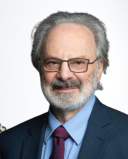Health
Can Someone Actually Die of a Broken Heart?
An intimate connection between heart and brain.
Updated February 19, 2024 Reviewed by Monica Vilhauer
Key points
- Broken Heart Syndrome is usually the result of severe emotional or physical stress.
- This condition predominantly occurs in post-menopausal women.
- The heart, like the nervous system, possesses the properties of memory and adaptation.

One day this winter, Bill, 76, a retired engineer, hit a patch of ice while walking to the local grocery store, fell, and broke his hip. Three days later, he died. His wife, Margaret, 60, who had been married to Bill for 35 years, was devastated. Her sorrow consumed her and she became gradually more withdrawn and more depressed. Within a few days, Margaret succumbed to the emotional torment and died in hospital of what her cardiologist called the Broken Heart Syndrome.
The broken heart syndrome, also called takotsubo cardiomyopathy (TTC) or stress-induced cardiomyopathy, was first described in 1990 in Japan. The condition is usually the result of severe emotional or physical stress, such as a sudden illness, the loss of a loved one, a serious accident, or a natural disaster, such as an earthquake. Symptoms may include severe chest pain, cold sweats, lightheadedness, marked fatigue, and shortness of breath resembling a heart attack. Research suggests that up to 5% of women suspected of having a heart attack actually have this disorder.
TTC predominantly occurs in post-menopausal women. People who have (or had) anxiety or depression are at a higher risk of developing TTC. Most people who have broken heart syndrome quickly recover and don't have long-lasting effects. But sometimes the condition occurs again. Rarely, broken heart syndrome can cause death.
The incidence and prevalence of TTC seem on the increase. This may be due to a more sensitive clinical screening of patients as well as the effects of SARS‐CoV‐2 exposure, and lately, the COVID‐19 pandemic.
In terms of etiology, cardiologists hypothesize that a sudden surge of stress hormones such as adrenaline and cortisone shock the heart, triggering changes in heart muscle cells or coronary blood vessels (or both) that prevent the left ventricle from contracting effectively.
I don’t believe that an outpouring of stress hormones is an adequate or sufficient explanation for broken heart syndrome.
When we look at such common expressions as, "He died of a broken heart," "Follow your heart," "She had a change of heart," "His heart was not in it," etc. it becomes very clear that in people's collective imagination, the heart is not only a machine that pumps blood but also the seat of emotions (aching heart, change of heart), thought and reason (his heart is in the right place) and personality (bleeding heart, faint heart).
Nobody says, “Follow your liver” or “Absence makes the kidneys grow fonder.” Only a comedian would say, “The pancreas has its reasons, of which reason knows nothing.” (I am referring here to Pascal’s famous saying, "The heart has its reasons, of which reason knows nothing.") And no doctor has ever claimed that their patient died of a broken brain. These expressions and metaphors reflect centuries of folk wisdom and are surprisingly closer to recent discoveries in cardiac function than science previously assumed.
Interestingly, in Japan, takotsubo cardiomyopathy is more prevalent among men. Obviously, psycho-social factors play a prominent role in the origins of this condition, and so does the brain–heart axis. For example, researchers in Japan measured cerebral blood flow (CBF) in patients with TSS in the acute and chronic phases. In all patients, CBF was significantly increased in the hippocampus, brain stem, and basal ganglia and significantly decreased in the prefrontal cortex in the acute phase. These changes subsided with full recovery.
New research by J. A. Armour of Hôpital du Sacré Coeur de Montréal has found that the human heart contains an intrinsic nervous system that exhibits both short and long-term memory functions. This intrinsic nervous system of the heart consists of approximately 40,000 neurons called sensory neurites which relay information to the brain.
Supporting these findings are studies from Buenos Aires, Argentina, and Texas, in which the researchers demonstrated that changes induced in cardiac activation rhythms persist long after the trigger that induced those changes is removed. Response to the same stimulus later on is much greater than the earlier response. The scientists concluded that the heart, like the nervous system, possesses the properties of memory and adaptation.
These studies and others like them prove the existence of the intimate connection between the heart and the brain, both of them containing vast amounts of memories and emotions working as a feedback system, complementing each other and constituting the better part of our mind.
I suggest that there are many benefits to be gained by viewing the heart as the center of the human personality, of one’s emotional connection to oneself and to others. It’s the compass that guides us through life, shaping our inner landscape and leading us toward spiritual growth and transformation. Small daily efforts to grapple with the sometimes tough reality of feelings might make it easier to accept a big shift when it comes.
Facebook image: fizkes/Shutterstock
LinkedIn image: BongkarnGraphic/Shutterstock
References
Sharkey SW, Windenburg DC, Lesser JR, et al. (2010). Natural history and expansive clinical profile of stress (tako-tsubo) cardiomyopathy. J Am Coll Cardiol.
Kwan, A. C., Navarrette, J., Botting, P., Chen, M. T.,... & Cheng, S. (2022). Mortality Risk in Takotsubo Syndrome Versus Myocarditis. Journal of the American Heart Association, 11(13), e025191.
Aizawa, K., & Suzuki, T. (2013). Takotsubo cardiomyopathy: Japanese perspective. Heart Failure Clinics, 9(2), 243-247.
Armour, J. A. (2008). Potential clinical relevance of the ‘little brain’ on the mammalian heart. Experimental physiology, 93(2), 165-176
*This post is adapted from The Globe and Mail, Feb. 12, 2024.




